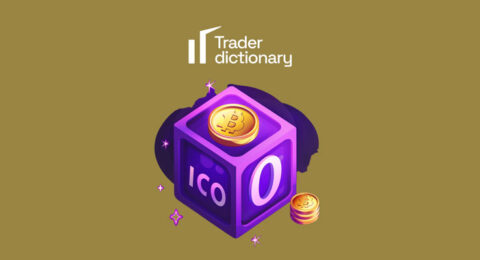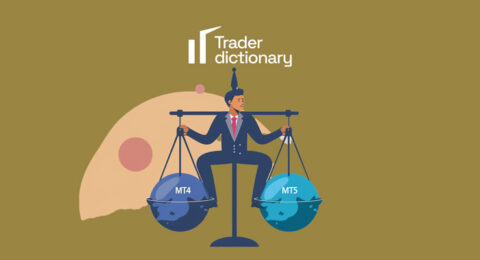In the world of forex investing, the term “forex leverage” is no longer unfamiliar to professional investors, but for beginners, it can be confusing and even daunting. In this article, we will help you understand this concept, as well as analyze the potential benefits and risks that forex leverage brings. Let’s explore together how to use this powerful tool intelligently and effectively, thereby enhancing your chances of success in your investment journey.
Concept of Forex Leverage
Forex leverage, also known as leverage, is essentially a financial tool that allows investors to enhance their investment capability. In other words, leverage helps you “borrow” capital from the trading floor to increase the amount of trade, thereby creating greater opportunities in profit-making. Imagine, you have $1,000, using a 1:100 leverage, you can trade up to $100,000!
However, it’s not always rosy. Big opportunities come with big risks. I have seen many cases where investors lost all their capital because they did not understand how to use leverage properly. It is important to understand its mechanism. You need to know that leverage not only increases profits but also increases the level of risk.
The key here is consideration. You must know what you are doing and never put everything into an uncertain risk. My advice: start with low leverage to get familiar and understand how it works, before gradually increasing the level. This helps you play safer in this volatile market.
Pros and Cons of Forex Leverage Trading
Advantages
Increase Profit Opportunities: Leverage allows you to trade with much more money than the actual capital you have. This opens up higher profit opportunities in trades.
Suitable for All Investment Sizes: Even if you have a small amount of capital, leverage still allows you to participate in the market on a larger scale.
Flexible in Trading: Leverage allows you to quickly adjust the scale of your trades depending on your strategy and market situation.
Improve Capital Efficiency: Using leverage can help optimize the efficiency of your investment capital, thereby increasing profitability.
Access to Larger Markets: Leverage opens the door to participating in larger markets without needing a corresponding large amount of capital.
Take Advantage of Small Fluctuations: Even when the market fluctuates slightly, leverage can still help you profit from these movements.
Easier to Place Orders: Many trading platforms offer leverage options easily, helping investors quickly set up and execute trades.
Remember, each of these benefits comes with corresponding risks. Understanding and careful consideration are the keys to maximizing the benefits of leverage in Forex trading.
Disadvantages
Higher Risk of Loss: Using leverage can rapidly increase loss, especially if the market moves in the opposite direction of your prediction.
Psychological Pressure: Trading with large amounts of money can create significant psychological pressure, causing investors to panic and make inaccurate decisions.
Difficult Risk Management: Controlling risk becomes more complicated when you trade with large amounts of money through leverage.
Overwhelm New Investors: New investors may feel overwhelmed and confused by the opportunities and risks that leverage brings.
Market Volatility: Leverage can significantly increase losses when the market is volatile and unpredictable.
Potential for Bankruptcy: In the worst case, careless use of leverage can lead to bankruptcy for the investor.
Discipline and Knowledge: Higher financial discipline and knowledge are required when using leverage in trading.
These disadvantages are valuable lessons that I have learned in my work and shared with the community at connextfx.com. Always remember that understanding and caution are key to minimizing risk when using leverage in Forex trading.
The Relationship Between Leverage and Margin
The relationship between leverage and margin in Forex is a topic I find very important to share from the perspective of an expert on connextfx.com. First, understand that margin is nothing more than the amount of money needed to open a trading position. When you use leverage, you are borrowing capital from the trading platform to enhance the size of your trade, and margin is the security for that loan.
Leverage and margin always go hand in hand. When you increase leverage, you are
reducing the amount of margin required. This sounds attractive, but it also increases risk. Suppose you use a 1:100 leverage, meaning you only need $1,000 to control $100,000. In this case, just a 1% market movement can cause you to lose your entire margin.
Conversely, if you use low leverage, you need a higher margin, but the risk is significantly reduced. This is why choosing the right leverage level is an important decision in Forex trading. High leverage can help you maximize profits from small market movements, but it can also lead to heavy losses if the market moves unfavorably.
How to Calculate Leverage in Forex
Calculating leverage in Forex is an essential part of an investor’s knowledge, and I want to share this in the simplest way.
The basic formula for calculating leverage in Forex is the total trade value divided by the margin amount. Suppose you want to buy 10,000 units of the EUR/USD pair, and the current price is 1.3000. Your total trade value will be 10,000 x 1.3000 = $13,000. If your trading platform offers a 1:100 leverage, you only need to provide 1% of the total value as margin, which is $130.
This sounds simple, but leverage is a double-edged sword. If the market moves in your favor, your profits will increase quickly. However, if the market moves against you, you will also lose money quickly. This is why understanding how to calculate leverage and managing risk is extremely important.
For example, if you trade with $50,000 and use a 1:50 leverage, you only need $1,000 as margin. This is a practical example that I see many investors apply. But remember, the use of leverage needs careful consideration to avoid unnecessary risks.
How Forex Leverage Works
Forex leverage works as a financial tool, allowing investors to enhance their trading capabilities far beyond the actual capital they have. In other words, leverage is a technique that investors use to open a position much larger than the amount of money they have available. This is achieved by using a small portion of the total trade value as “margin”.
For example, if you use a 1:100 leverage, it means that for every dollar of yours, you can control up to $100 on the market. If you invest $1,000, you can actually control up to $100,000 on the market. This creates an opportunity to increase profits from small market movements.
However, leverage also increases corresponding risks. A small unfavorable movement can lead to large losses compared to the original capital. That’s why understanding how leverage works is extremely important, as well as applying appropriate risk management strategies in every trade.
How Much Leverage Should You Choose in Forex Trading?
Firstly, remember that there is no “golden leverage ratio” suitable for everyone. Depending on the trading strategy, experience, and risk tolerance of each investor, the ideal leverage ratio may vary.
For New Investors: If you’re just starting out, I recommend using low leverage. A ratio like 1:10 or 1:20 is suitable for you to get familiar with the market without facing too high a risk.
Experience and Knowledge: If you have experience and solid understanding
of the market, you may consider increasing your leverage ratio. However, this also means increasing your risk.
Risk and Profit Analysis: Assess the relationship between risk and expected profit. A high leverage ratio can bring significant profits, but can also lead to heavy losses.
Capital Management: Manage your capital carefully and never put all your “eggs” in one “basket”. High leverage should be combined with an effective capital management strategy.
Goals and Trading Strategy: Determine your goals and trading strategy. Leverage should be adjusted to suit your long-term trading strategy and objectives.
Remember, the choice of an appropriate leverage ratio depends not only on trading skills but also on your ability to withstand and manage risk. Careful consideration and caution are always key to success in Forex trading.
Example of Forex Leverage
Suppose you want to trade the EUR/USD currency pair with a quantity of 10,000 EUR. Assume the current price is 1.2000 USD per EUR. Without leverage, you would need $12,000 (10,000 x 1.2000) to make this trade. However, using a 1:100 leverage, you only need 1% of the total amount, which is $120 to open this trading position.
If the EUR/USD price rises to 1.2100, the value of 10,000 EUR will be $12,100. This means you have made a profit of $100 from this trade. In this case, using leverage has helped you increase your profit from $100 to 100 times, because you only used $120 to control a $12,000 position.
However, if the price drops to 1.1900, you will lose $100. In this case, your loss also increases 100 times compared to the initial margin. This is a typical example showing how leverage can increase profits but also significantly increase the risk of losses.
Why Do Brokers Offer High Leverage?
Why do brokers offer high leverage? This is a question I often receive. There are several main reasons behind this.
First, offering high leverage is part of the business strategy of brokers. By doing so, they attract a large number of clients, especially small retail investors and beginners, who may not have much capital but want to participate in the Forex market.
Second, high leverage allows investors the opportunity to increase profits from small market movements. This is particularly important in Forex, where price movements are often not as large as in other markets.
Third, high leverage is also a powerful marketing tool. It creates an impression of the ability to easily profit from the market, although the reality is not always so.
However, it is important to realize that high leverage also comes with high risk. When trading with high leverage, a small unwanted fluctuation can lead to large losses. This is why the use of leverage needs careful consideration, in line with each investor’s strategy and risk management ability.
Risks in Forex Leverage
First and foremost, leverage amplifies the potential for both losses and profits. When using leverage, even small market fluctuations can lead to large losses compared to the initial investment. This can happen very quickly and without prior warning.
Secondly, using leverage requires high discipline and emotional control. Many investors, especially newcomers, are often tempted by the possibility of high profits and fail to accurately assess the level of risk they can withstand.
Thirdly, risk management becomes more complicated when using leverage. This requires market analysis skills and tight trading planning. A small mistake in analysis can lead to significant losses.
Finally, the volatility of the Forex market can increase the risk when using leverage. This market is often very sensitive to economic, political events, and even news. These fluctuations can quickly and significantly change the value.
Therefore, understanding and managing risk when using leverage is extremely important. This is not only a matter of knowledge but also of discipline and self-control in trading.
Conclusion
Concluding the article “Forex Leverage: Benefits and Risks You Need to Know”, we hope you have gained a more comprehensive and in-depth view of leverage in Forex as well as its potential benefits and risks. As seen, leverage can be a powerful tool to enhance profits, but it also simultaneously increases the level of risk. The most important thing is the application of knowledge, discipline, and appropriate risk management strategy in each of your trades.
We encourage you to continue learning and enhancing your knowledge about the Forex market. Remember, there is no “one-size-fits-all” formula in trading; each decision should be carefully considered based on your individual goals, knowledge, and skills. We wish you success and safety on your investment journey!









